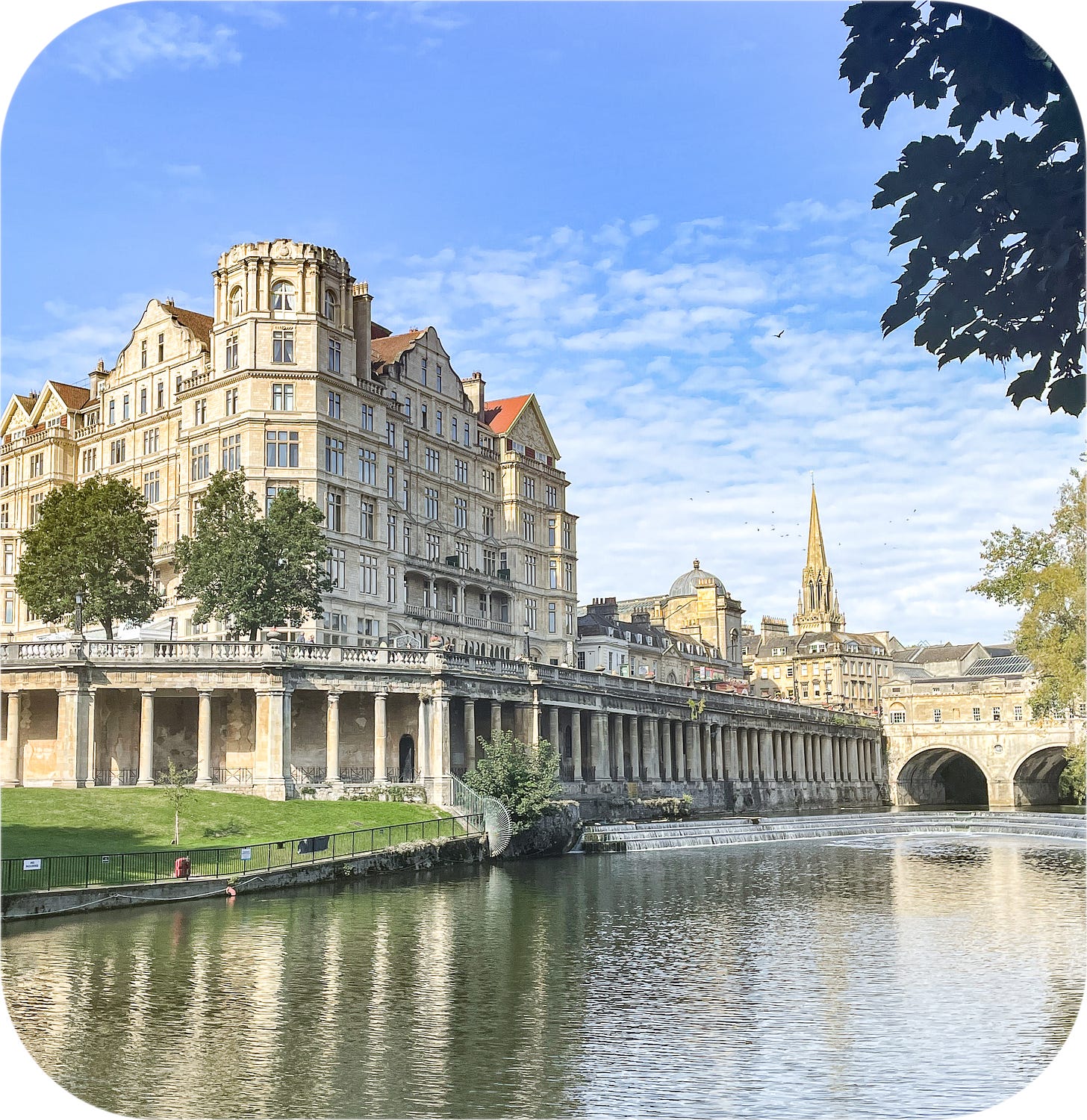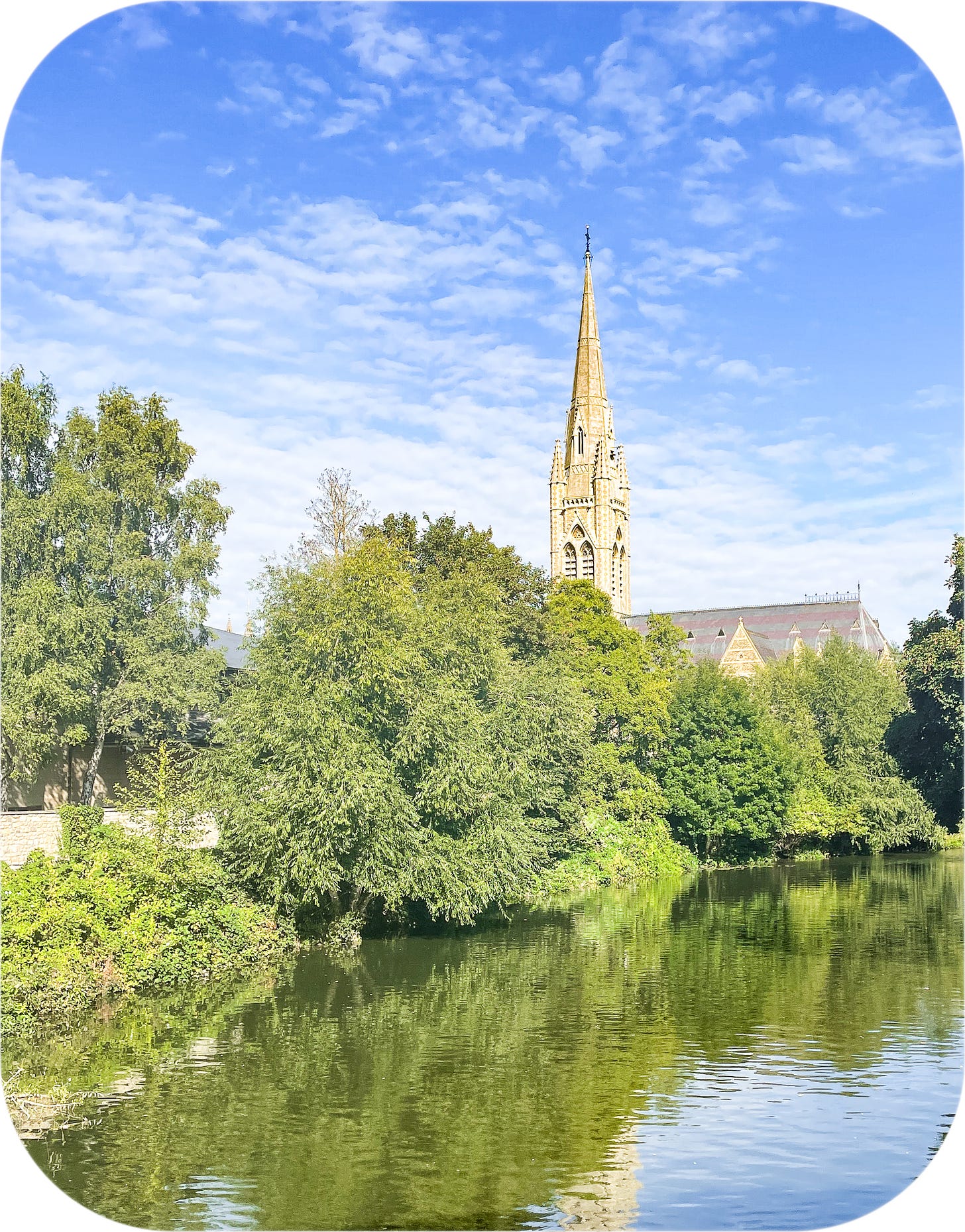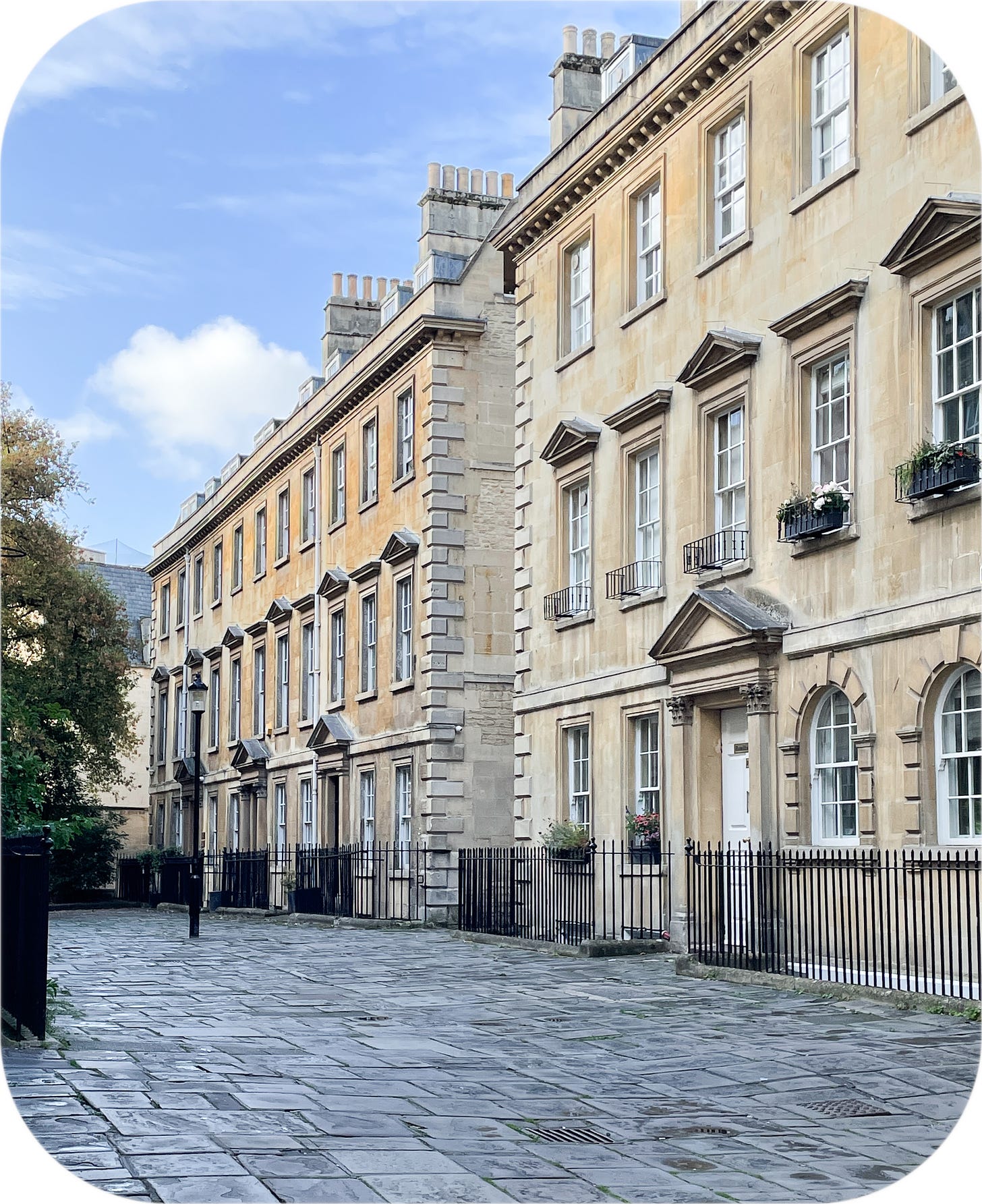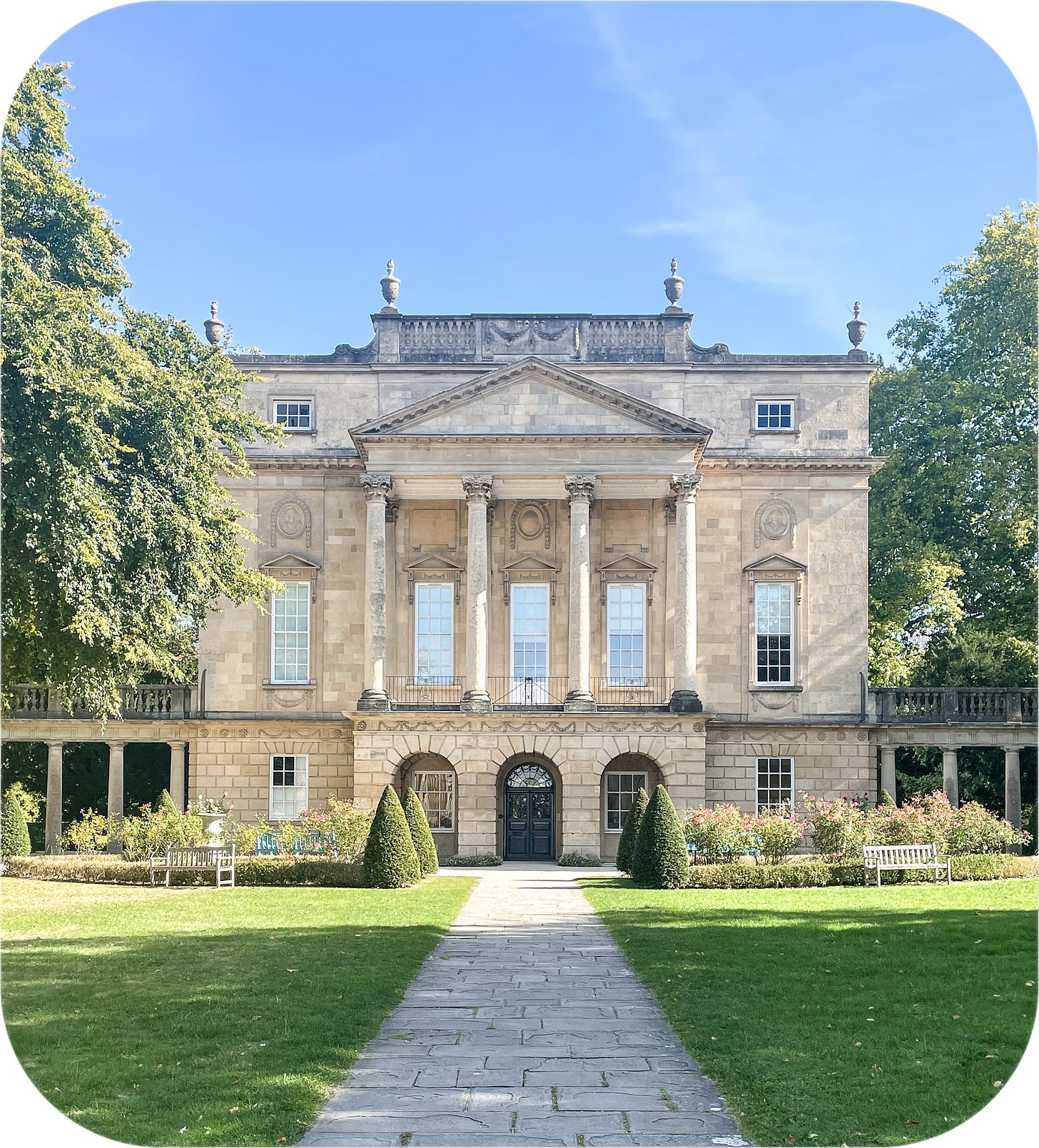{Bath, England}
Here’s the thing: I was expecting balls.
This is my second time visiting Bath in as many years. I stayed for a week in the Widcombe neighborhood last year, and I’ve been Bath-adjacent for the past six weeks. And yet, in all that time I haven’t attended a single ball. I haven’t even been invited to one, honestly.
Part of me is glad - I’m not traveling with a ball gown, after all.
But it would certainly be nice to get an invitation.
I’ve tried to follow the rules that Beau Nash, the famous 18th-century Master of Ceremonies of Bath…the man who MADE Bath into what it is today…posted on the doors of the Assembly Rooms:
RULES to be observed at BATH.
THAT a visit of ceremony at first coming and another at going away, are all that are expected or desired, by ladies of quality and fashion,-- except impertinents.
(Actually, I don’t know what that means.)
THAT Ladies coming to the Ball appoint a Time for their Footmen coming to wait on them Home, to prevent Disturbances and Invoconveniences to Themselves and Others.
Ok, I’m going to stop there, because the next eleven items concern proper manners at the ball, and we’ve already established that I don’t get invited to those. There’s only so much a modern-day lady of quality and fashion can do.
More quality than fashion, it has to be said.
I love Bath.
It was the city I was most looking forward to visiting on my first trip to England in 2022, and it turned out to be the city that I loved the most. It was also the city that I was the most anxious to return to when I came back to England this year.
Bath is England’s great Georgian city. Lying in the gently sloping valley of the River Avon, its streets are lined with elegant, symmetrical 18th-century homes and storefronts constructed of Bath limestone - a creamy stone that turns the color of honey in certain lights. It is architecturally interesting, delightfully bookish, loaded with history, and surrounded by some of England’s loveliest countryside. It is right up my alley.
(I know I should say it’s “right up my street”, because I’m in England…but then again I should also try to pronounce Bath with an English accent. My experience tells me, though, that it is virtually impossible for an American to do this without sounding ridiculous, and so I stick with the American version. Besides, the guys on the train say “Baf”, so I think there is room for a whole range of pronunciations. I’m sure Beau Nash would have a different opinion, but I’ve given up on him until I get invited to a ball.)
Now, I am mostly kidding about balls…but if I did want to attend one, I’ve come at the right time of year. My stay near Bath this year coincides with the annual Jane Austen festival. The festival is kind of a big deal, with over 3,500 Jane Austen enthusiasts from around the world descending on Bath for ten days. Jane’s first completed novel, Northanger Abbey, and her last one, Persuasion, are both partly set in Bath - and the author herself lived here on and off through much of her twenties. Jane didn’t really like Bath, honestly. She was more of a country girl. Nevertheless, when you consider her history with the city, and think about the backdrop provided by its beautiful Georgian architecture, it’s hard to deny that Bath is the perfect location for her large yearly party.
I’m not attending the festival. I am, however, very much looking forward to watching the opening day Regency Costumed Promenade, in which around 800 Jane-ites don period dress and parade through the streets of Bath.
It breaks my heart a little bit, therefore, when I come down with food poisoning on the night before the Promenade, and have to spend the entire day in bed. I am taken out in the most English way possible: by a bad scone. Bad clotted cream, to be more specific. To be honest, part of me knows when I am eating the crusty cream that I am making a bad decision, and yet I tell myself that I just don’t know enough about English cream, and that the café certainly wouldn’t serve cream that had gone bad to a customer. I was so, so wrong. I will trust my instincts next time.
Anyway, I don’t get to see the Promenade.
Keep reading with a 7-day free trial
Subscribe to Beautiful Things: Letters from Abroad to keep reading this post and get 7 days of free access to the full post archives.










